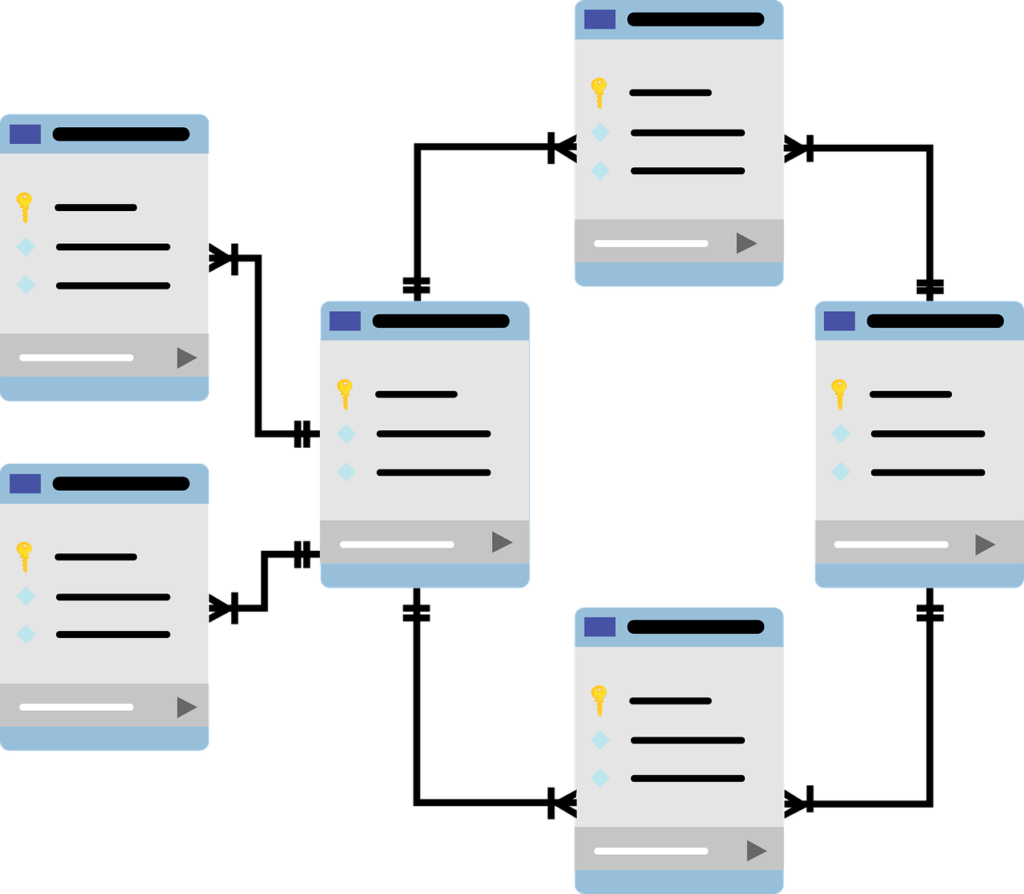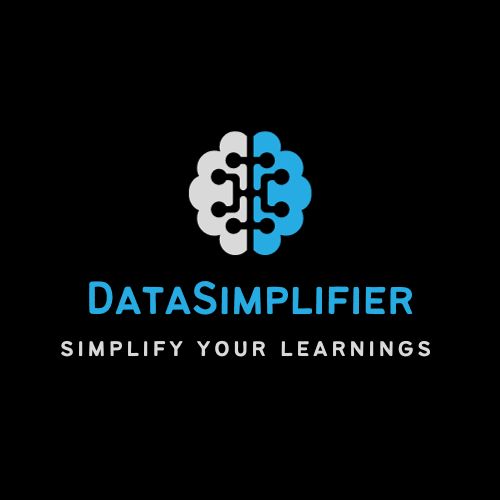Introduction (AI in Data Analytics)
It is more critical today than it has ever been to process data effectively: not even so much for the layman but much more so for the student and professional who seek to progress in their career in AI, ML, and data analytics. More pressing to a lot of people now is how to apply AI into data analysis. AI makes data processing faster and accurate and insightful predictions that inform decision-making. This final guide will navigate through the various avenues of leveraging AI in data analysis so that you are ever prepared for your next interview or job opportunity in this exciting field.

As we delve into the concept of leveraging AI in data analytics, we shall guide you through the important tools, methodologies, and practical applications that may significantly enhance your analytical capabilities. Of generative AI for data insights to understanding how AI analyzes data, this article is a treasure trove for anyone who wants to jump into the arena of data science. Whether you are a student preparing for the first job or a professional looking for upskilling, our findings will break down complex concepts and empower you to unleash the full potential of AI in your data analysis endeavors.
1.AI in Data Analyticsfrom the AI Viewpoint
Data analytics through automation is what AI does by streamlining repetitive tasks such as pattern discovery and predictive model construction. This is a process that traditionally requires time-consuming manual labor that is prone to human error. Now, though, with the advent of AI, you can mechanize it. For instance, through machine learning algorithms, you can sort through massive datasets to spot trends you might have otherwise missed or taken much longer over. This is particularly useful where most decisions are data-dependent in finance and healthcare, but also marketing-related areas.
The primary use of AI in data analytics is in the use of machine learning-based techniques. These include either supervised learning, unsupervised learning, or reinforcement learning, depending on the type of data being evaluated and the nature of the desired outcome. For example, supervised learning can be used to carry out predictive analytics whereby historical data is applied in the design of models to predict future trends. On the other side, unsupervised learning could detect outliers in data; therefore, it would be profitable to identify fraud in financial institutions. Reinforcement learning can be applied to dynamic systems like stock trading wherein the model learns as well as adjusts according to real-time feedbacks.
2. Practical Applications of AI in Data Analysis
Use of AI for qualitative data analysis makes people shift attention to understand the unstructured data sets-for example, text, images, and audio-and how the machines can apprehend and interpret human language. Natural Language Processing is a technological tool in AI. Sentiment analysis, for instance, is the measure of public opinion to be taken from social media or customer reviews; that’s excellent in itself-an application of AI to extract insights from qualitative data. Companies might make better decisions concerning product improvements or marketing strategies based on the sentiment behind customer feedback.
Generative AI is going to be a very exciting area promising to give a much-needed impetus to capabilities in data analysis. It can be very useful in simulating scenarios or even augmenting datasets in training machine learning models by creating new data points based on previously available data. For example, in a large number of problems in machine learning, generative AI can synthesize data which retains statistical properties from the original dataset while working with very limited samples of data. That can help in improving model performance significantly and making business insights much more robust.
Let’s analyze some interesting real-world applications of AI in different industries.
Healthcare: AI algorithms process medical images to classify the disease as well as tumors or fractures, making diagnosis more accurate. As an example, deep learning models can process thousands of X-ray images in order to guide the radiologists in recognizing abnormalities.
Finance: The financial organizations use AI in credit scoring and fraud detection. The algorithms of the machine learning identify various patterns of transaction that mark the same as suspicious so that before the time, potential frauds can be prevented.

Retail: In retail, AI is used to personalize the customer experience according to the purchasing behavior. Recommendation systems are created to suggest products to customers based on previous purchases, which increases customer satisfaction and sales volumes.
Manufacturing: AI-based predictive maintenance analyses machine data to predict failures before they even happen. Being proactive pays off for companies in reduced downtime and expenses on maintenance.(AI in Data Analytics)
3. Tools and Technologies Used to Work with AI on Data Analytics
To get AI working for you during data analysis, you need to learn a wide variety of various tools and technologies. Some of the most popular tools include:
Python – Probably one of the most widely used programming languages in data science, Python has various libraries on Pandas, NumPy, and Scikit-learn that ease data manipulation and enables easy machine learning. Data analysts immensely love using Python, as it is highly flexible.
R: That’s another super powerful language, very similar to S. It is known for its statistical capabilities. Many data analysts and even statisticians use it. It has a rich ecosystem of packages for the analysis of data, which is one of the features that makes it very powerful. You can use packages like ggplot2 for data visualization or caret for machine learning in R.
Tableau and Power BI: These are some of the most used data visualization tools that take complex analyses involving data and make them easily ingestible visual formats, so understanding insights at a glance becomes easier for all stakeholders. Tableau is particularly known for handling large datasets with the interactivity of dashboards in them; Power BI easily integrates into other Microsoft products, hence the demand from businesses already using Microsoft Office.
TensorFlow and PyTorch are deep-learning frameworks for building and training neural networks, capable of performing advanced ai in data analytics. TensorFlow is developed by Google and has been widely used both in academic research and production settings. PyTorch has been preferred by many researchers because it is easier to experiment with and modify neural network architectures thanks to its dynamic computation graph.
Apache Spark is a powerful open-source processing engine. It is mostly used for big-scale data processing. It supports in-memory computations and the ability to perform both batch and real-time processing. Hence it is extremely useful for big data analytics. A number of machine learning algorithms provided by the MLlib library of Spark can be used for ai in data analytics tasks.
Google Cloud AI and AWS AI Services: Cloud Service Provider Offerings Once more, cloud providers like Google Cloud and Amazon Web Services (AWS) offer a whole range of AI and machine learning services that make it a lot easier to deploy AI in data analytics. The services include pre-trained models on image recognition, natural language processing, and lots more for development applications without significant AI expertise.(AI in Data Analytics)
You’ll therefore become even sharper analytically as you work with such tools and become such a great asset in the job market. Preparation will also increase your prospects of selection, since many interviewers look for those who can adequately work with AI in data analytics.
4. Preparing for Interviews: What You Need to Know (AI in Data Analytics)
As you prepare yourself to sit through interviews for the realms of AI, ML, and data analytics, it is important to familiarize yourself with the sorts of questions that are likely to arise. In this regard, employers are looking for candidates who can demonstrate practical experience when it comes to applying AI in analyzing data. Be prepared to take them through specific projects in which you have effectively utilized AI techniques to solve real-world problems. Showing a good acquaintance with the sorts of tools like Python, R, and machine learning libraries really boost your profile.
Here are some specific areas that you could focus on as part of your interview preparation:
Technical Questions: You will be asked about algorithms and methodologies-specifically, algorithms involving supervised and unsupervised learning and how one would measure the performance of a machine learning model using accuracy, precision, and recall metrics.
Hands-on coding exercises: Most interviews usually include coding tests where you would be required to write out algorithms, or analyze data using Python or R. Coding exercises on LeetCode or HackerRank could really sharpen your skills in this regard.
Portfolio Presentation Present a portfolio of work that demonstrates the ability to apply AI in data analytics and features which problems you have addressed, what tools you used, and what the results were. Be prepared to discuss the problems that came up during the process and how you solved them.

Case Studies: With a data set, you’re going to want to pull out some insights or make some kind of prediction. So practicing these kinds of situations will show your analytical thinking by keeping you on your toes. Additionally, if you can speak to the workings of your mind for these solutions, then it will also show you understand them really deeply and can articulate complex ideas.
Preparing well in all these areas will show competency and confidence when interviewed, hence making you a better candidate for a desired job.(AI in Data Analytics)
5. Ethics While Analyzing AI Data
When you learn more about how AI is used in data science, you can consider the ethics involved with your work. After all, they say that with great power comes great responsibility. The implementations of AI technologies might lead to biased outcomes if proper care is not taken.
END. For example, if data used to train AI models is biased, then so will the predictions be – and so, through them, the unfair or unethical decisions that may arise. Thus, it is important knowing how to mitigate bias and thus assure fairness in your analyses.
Key considerations are:
Ethics
Data Privacy: If one has to use AI in data analytics, especially concerning sensitive data, it is essential to respect ethical guidelines and regulations, such as GDPR. Data has to be anonymized, and then one has to ensure that you have permission over the data itself. This ensures the privacy of the people being analyzed, and therefore helps build and continue trust over your analytical practices.
Bias Mitigation: Test your models regularly for bias by applying them to different datasets. Make use of various techniques including re-sampling, re-weighting, or algorithms that focus on fairness in results for a majority of different demographic groups.
Transparency: Be transparent about your models. Being able to explain just how your AI decisions are made (often called “explainable AI”) may increase stakeholder trust and lead to better decision-making.(AI in Data Analytics)
Accountability: Being a data analyst and using AI, you are responsible for what your analysis produces. Accountability toward one’s work encourages ethical practice and lays the groundwork for integrity in the organization.
Adding an ethical dimension to your ai in data analytics can be tantamount to assuring that you’re doing what is legally correct, but in the same light, it promotes trust with your clients and stakeholders-exactly what there’s much hype about at a time when data breaches and claims of algorithmic bias are high on people’s radar.
6. The Future of AI and Data Analysis
It’s exciting for the industry as many great trends will be shaping AI and data analysis ahead. Understanding such trends will put you ahead of the curve and, thus, makes you a thought leader in your field. Here are some of the key trends to watch:

Automated Machine Learning (AutoML): Model selection and hyperparameter tuning is now automated. It makes machine learning well and truly accessible to new users. This allows data analysts to stay in the view of interpretation instead of getting bogged down by the crevice of technical details. Google’s AutoML is at the forefront of the new direction of this trend, followed by H2O.ai.(AI in Data Analytics)
AI-Powered Data Visualization: Advanced data visualization tools are becoming increasingly AI-driven to deliver insights directly. Such tools can scan datasets and even suggest the most effective ways of representing data in views so that it could be easy to analyze and then communicate results to stakeholders. Features such as natural language queries in platforms like Tableau enable users to present questions in plain language and receive visual responses.
AI-IoT Integration: In the integration of AI with IoT, large volumes of real-time data analysis are now possible. As new devices get connected, the data volume generated rises exponentially. Such huge amounts of data are processed in real time by AI to provide insights to motivate action right away. Predictive maintenance, patient monitoring, and resource allocation in the areas of manufacturing, healthcare, and smart cities already utilize the integration.
Ethical AI Development: With growing concerns of the ethical issues of AI, firms set out to develop ethically aware AI. They use frameworks that are related to accountability, fairness, and transparency in the AI system. Organizations engaged in these practices of ethical AI gain a competitive advantage and further improve strong relationships with their customers as well as investors.(AI in Data Analytics)
Evolving Generative AI : Generative AI refers to the development of new content or data points from information. It is evolving rapidly and is already applied for synthetic data creation to train models, realistic simulation generation, and even content-based text and image generation. Knowing how to exploit generative AI is what would give one that edge in a competitive world of data analysis, especially if creative.
Through watching these trends, one is going to acquire the skills and knowledge that will form bedrock for a successful career in AI and data analysis. During these periods, continuous learning and adaptation to various new technologies will also be necessary for the evolution happening around them.
Conclusion (AI in Data Analytics)
It’s, therefore not a boon but a necessity to implement the ways through which one can interact with AI towards data analysis in today’s data-driven economy. Applying AI technologies can improve how fast and accurate your analyses are, therefore making better-informed decisions that may further take your career up. Whether you’re focusing on quantitative data with machine learning or qualitative data through NLP, the applications of AI in data analytics are indeed broad and diverse.
As you embark on the path of excelling in mastering AI in data analysis, you’ll be updated with the latest tools and techniques. Join our community by enrolling in our various Telegram groups, through which you’ll be connected with other like-minded people, updated about the latest trends about AI, ML, and Data Science, and, of course, receive information about job notifications. We update ongoing job opportunities which would be specially aimed for aspiring data analysts and AI professionals.
We appreciate your commitment to studying and learning in this area. To express gratitude, we invite you into our premium Telegram group where you can enjoy additional resources and support, so kindly comment below with your Telegram handle as we will send you our free link invite into our community of like-minded, active, and helpful members. Thanks for reading and all the best on your journey to becoming a proficient data analyst!
Knowing how to properly apply AI in data analysis will make you a force to be reckoned with in any organization. Skills you develop aren’t just enhancing your career prospects but, very importantly, also enabling you to meaningfully contribute to the accelerating landscape of data science. Learn with an open heart and be curious and eager to grow, as your potential is limitless!
Share the post with your friends

Actually it is very useful for beginners
It is very useful for beginners